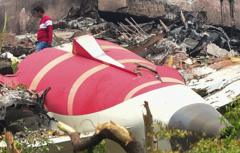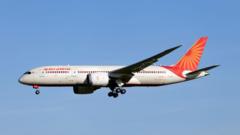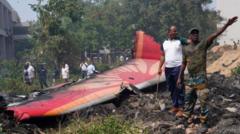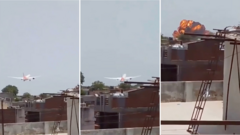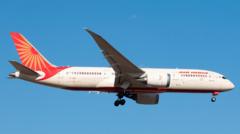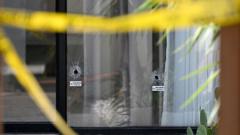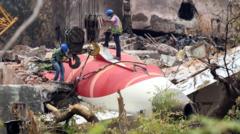As South Korea grapples with its worst aviation disaster in years, families await the identification of victims after the crash of Jeju Air Flight 2216 at Muan Airport, which claimed the lives of 179 individuals.
South Korea's Tragic Plane Crash: Families Face Heart-Wrenching Wait

South Korea's Tragic Plane Crash: Families Face Heart-Wrenching Wait
Authorities Confirm Extensive Recovery Efforts Following Jeju Air Flight Disaster
In the wake of the catastrophic crash on Sunday involving Jeju Air Flight 7C2216, which had departed from Bangkok, South Korean officials have commenced a thorough and delicate recovery process. The tragic incident, which occurred at Muan International Airport, left 179 people dead, sparking overwhelming anguish among family members who flocked to the airport for news of their loved ones.
Relatives braved emotional turmoil as they faced the gut-wrenching reality that the identification and return of victims’ remains could take several days, rather than the expected hours. Many families had arrived at the airport in distress, only to discover the extensive damage of the flight, which crash-landed and careened along the runway before colliding with a concrete structure and igniting.
Initial assessments revealed that only the tail of the aircraft was identifiable amidst the wreckage, while only two crew members were confirmed to have survived the disaster. With most of the remains expected to be identified shortly, officials warned that the process of preparing the bodies for return might take as long as ten days due to the condition of most victims, who were badly charred and fragmented.
As recovery efforts progressed, law enforcement stated that they had discovered over 600 body parts, and searches were ongoing to locate additional remains. The mix of grief and uncertainty loomed over the gathering crowd at Muan Airport, casting a shadow over South Korea as it confronts the aftermath of one of its deadliest air catastrophes in recent history.
Relatives braved emotional turmoil as they faced the gut-wrenching reality that the identification and return of victims’ remains could take several days, rather than the expected hours. Many families had arrived at the airport in distress, only to discover the extensive damage of the flight, which crash-landed and careened along the runway before colliding with a concrete structure and igniting.
Initial assessments revealed that only the tail of the aircraft was identifiable amidst the wreckage, while only two crew members were confirmed to have survived the disaster. With most of the remains expected to be identified shortly, officials warned that the process of preparing the bodies for return might take as long as ten days due to the condition of most victims, who were badly charred and fragmented.
As recovery efforts progressed, law enforcement stated that they had discovered over 600 body parts, and searches were ongoing to locate additional remains. The mix of grief and uncertainty loomed over the gathering crowd at Muan Airport, casting a shadow over South Korea as it confronts the aftermath of one of its deadliest air catastrophes in recent history.


